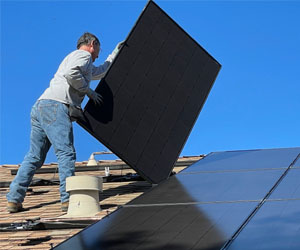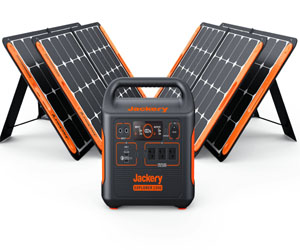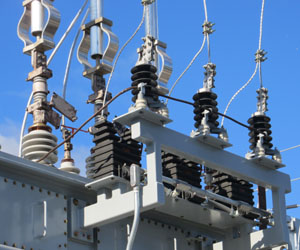


Shaping Spaces For Comfort And Functionality

Housing design is a multifaceted discipline that goes beyond mere construction and architecture. It encompasses the art and science of creating living spaces that are not only aesthetically pleasing but also functional, comfortable, and adaptable to the needs and preferences of their occupants. In a world where urbanization and lifestyle demands are ever-evolving, innovative housing design plays a pivotal role in addressing the housing challenges of our time.
Modern housing design takes into account a wide range of factors, from the environmental impact of construction materials and energy efficiency to the aesthetics of interior decor and the incorporation of smart technologies. Here are some key aspects of housing design:
Functional Layout: An effective housing design starts with a well-thought-out floor plan. It considers the practical needs of residents, from the number of bedrooms and bathrooms to the placement of the kitchen and living areas. An efficient layout maximizes space utilization and minimizes wasted square footage.
Aesthetics: While functionality is paramount, aesthetics are equally important. Aesthetically pleasing design can enhance the quality of life for residents. The choice of materials, colors, and architectural elements can create a sense of comfort, style, and identity within the home.
Sustainability: Sustainable housing design is on the rise, driven by a growing awareness of environmental concerns. Green building practices focus on using eco-friendly materials, energy-efficient technologies, and renewable energy sources to minimize the carbon footprint of a home.
Adaptability: Housing design should be flexible and adaptable to accommodate the changing needs of its inhabitants. This is particularly important in a world where the dynamics of families and lifestyles evolve over time. Features like convertible spaces and modular furniture are becoming more popular.
Accessibility: Accessibility is a critical aspect of housing design. It ensures that homes can be comfortably and safely used by people of all ages and abilities. Features like wider doorways, no-step entries, and accessible bathroom and kitchen designs are integral to inclusive housing.
Natural Light And Ventilation: Designers are increasingly focusing on maximizing natural light and ventilation in homes. Well-placed windows and open floor plans can significantly improve the quality of life for residents while reducing the need for artificial lighting and climate control.
Technology Integration: With the advent of smart home technology, housing design now includes the seamless integration of IoT devices and systems for automation, security, and energy efficiency. This enhances the convenience and functionality of modern homes.
Outdoor Spaces: Outdoor areas such as gardens, balconies, and terraces are an essential part of housing design, offering residents opportunities for relaxation and connection with nature.
Cultural Sensitivity: In a diverse world, housing design should respect and reflect the cultural and regional preferences of its occupants. Elements like cultural symbolism, religious considerations, and traditional design features can all play a role.
Community Integration: For multi-family housing and community design, integration with the surrounding neighborhood and the creation of shared spaces can foster a sense of belonging and social cohesion.
Housing design is a dynamic and evolving field that responds to the changing needs and challenges of our times. It's not just about creating a physical structure; it's about crafting spaces where people can live comfortably, sustainably, and in harmony with their surroundings. The future of housing design will continue to be shaped by innovation, sustainability, and a commitment to enhancing the quality of life for all.
Illuminating The Future Of Energy
 At the heart of solar technology is the photovoltaic (PV) cell, which converts sunlight into electricity. This process is accomplished through a series of interconnected steps:
At the heart of solar technology is the photovoltaic (PV) cell, which converts sunlight into electricity. This process is accomplished through a series of interconnected steps:
Photon Absorption: When sunlight hits the PV cell, it excites electrons in the semiconductor material. These semiconductors are typically made of silicon.
Electron Movement: The excited electrons move through the semiconductor material, creating an electric current. This movement of electrons is what we harness as electricity.
Inverter Conversion: The electric current generated by the PV cells is direct current (DC). However, most of our electrical devices and appliances operate on alternating current (AC). An inverter converts the DC to AC, making it compatible with standard household electricity.
A Clean Home And A Clean Conscience
 Environmental Impact: Traditional cleaning products can contain hazardous chemicals that, when washed down the drain, enter water systems and harm aquatic life. Green cleaning helps reduce water pollution and the environmental impact of your cleaning routine.
Environmental Impact: Traditional cleaning products can contain hazardous chemicals that, when washed down the drain, enter water systems and harm aquatic life. Green cleaning helps reduce water pollution and the environmental impact of your cleaning routine.
Reducing Plastic Waste: Many green cleaning products come in recyclable or refillable containers, reducing plastic waste and contributing to a healthier planet.
Sustainability: By opting for sustainable cleaning practices, you contribute to a more eco-friendly world and encourage the development of environmentally responsible products.
Maximizing Space And Minimizing Clutter
 6. Over-Door Storage
6. Over-Door Storage
Over-door storage solutions are perfect for optimizing small spaces. Hanging racks, hooks, and pockets can be attached to doors to store shoes, accessories, cleaning supplies, or pantry items. These solutions maximize space while keeping items within easy reach.
7. Floating Furniture
Floating furniture, like wall-mounted vanities, desks, and entertainment centers, can make a room feel more spacious by creating the illusion of more floor space. These pieces not only look sleek but also offer storage underneath.
8. Clear Containers And Labels
Clear storage containers are essential for efficient organization. They allow you to see the contents without having to open each container. Use labels to further categorize and identify your belongings, making it easy to find what you need.
Nurturing A Sustainable Tomorrow
 Reduce, Reuse, Recycle: The famous "Three R's" serve as the foundation of eco-conscious living. Reducing waste through mindful consumption, reusing items when possible, and recycling materials are essential practices that help divert waste from landfills and conserve valuable resources.
Reduce, Reuse, Recycle: The famous "Three R's" serve as the foundation of eco-conscious living. Reducing waste through mindful consumption, reusing items when possible, and recycling materials are essential practices that help divert waste from landfills and conserve valuable resources.
Energy Efficiency: Reducing energy consumption not only saves money but also reduces greenhouse gas emissions. Simple steps like using energy-efficient appliances, sealing drafts in homes, and turning off lights and electronics when not in use can make a significant difference.
Sustainable Transportation: Opting for eco-friendly modes of transportation, such as biking, carpooling, or using public transit, can help reduce air pollution and the carbon footprint associated with personal travel.
Mindful Consumption: Eco-conscious individuals make deliberate choices when it comes to the products they buy. They prioritize environmentally friendly and sustainably sourced goods, supporting companies that adhere to eco-conscious principles.
Conservation Of Water: Water is a finite resource, and eco-conscious living encourages water conservation through efficient fixtures, rainwater harvesting, and responsible water use practices.
Local And Organic Foods: Supporting local and organic food production not only reduces the carbon footprint associated with food transportation but also promotes healthier eating and sustainable agriculture.
Eco-Friendly Energy: Harnessing renewable energy sources, such as solar panels and wind turbines, is a significant aspect of eco-conscious living. It reduces reliance on fossil fuels and lowers energy costs.
A Brighter, Greener Future
 Energy efficiency plays a pivotal role in addressing several pressing global issues:
Energy efficiency plays a pivotal role in addressing several pressing global issues:
Environmental Sustainability: Increasing energy efficiency helps reduce greenhouse gas emissions, mitigating the effects of climate change. It allows us to meet our energy needs with a smaller ecological footprint.
Resource Conservation: Efficient energy use preserves finite natural resources like coal, oil, and natural gas. It reduces the need for extensive mining and drilling, minimizing the negative environmental impact of resource extraction.
Cost Savings: For individuals and businesses, energy efficiency translates to lower energy bills. By reducing waste and optimizing energy consumption, you can significantly cut your energy costs.
The Benefits Of Energy Efficiency
Lower Energy Bills: Improved energy efficiency translates directly into lower energy bills for households and reduced operational costs for businesses. This means more money in your pocket and increased competitiveness for companies.
Environmental Conservation: Reduced energy consumption leads to lower emissions of greenhouse gases, making a substantial contribution to environmental preservation and combating climate change.
Energy Independence: Energy efficiency, when combined with renewable energy sources like solar and wind power, can lead to greater energy independence. Less reliance on non-renewable resources means more stability and control over your energy supply.
 Energy Efficiency: Sustainable cleaning practices also involve energy-efficient cleaning appliances. This means reduced energy consumption, which is not only cost-effective but also better for the planet.
Energy Efficiency: Sustainable cleaning practices also involve energy-efficient cleaning appliances. This means reduced energy consumption, which is not only cost-effective but also better for the planet.
Effective Sustainable Cleaning Solutions
Eco-Friendly Cleaning Products: Look for cleaning products with eco-friendly certifications such as the "EcoLogo" or "Green Seal." These products are verified to meet environmental and health standards.
Homemade Cleaning Solutions: You can make your own sustainable cleaning solutions using readily available ingredients like vinegar, baking soda, lemon juice, and essential oils. These natural ingredients are effective for various cleaning tasks and are safe for your family and the environment.
Refillable Containers: Opt for cleaning products that come in refillable containers, reducing the need for single-use plastic bottles that contribute to environmental pollution.
Reusable Cleaning Tools: Invest in reusable cleaning tools such as microfiber cloths and mop heads. These tools effectively capture dirt and dust, reducing the need for disposable cleaning supplies.
Water Conservation: Sustainable cleaning also involves water conservation. Be mindful of the amount of water you use during cleaning, and consider water-saving practices like using a bucket for mopping instead of running water.
The Benefits Of Sustainable Cleaning Solutions
Healthier Indoor Air Quality: Sustainable cleaning solutions do not release harmful volatile organic compounds (VOCs) into the air, leading to cleaner and healthier indoor air. This is particularly important for individuals with respiratory issues or allergies.